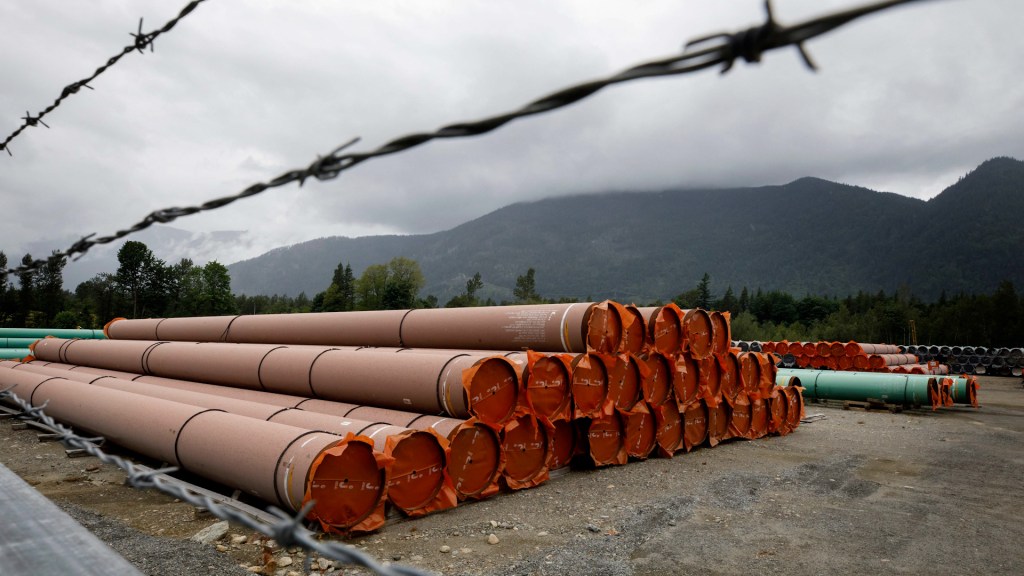
[LAUREN TAYLOR]
AS THE WORLD GRAPPLES WITH ENVIRONMENTAL CHALLENGES, A NEW DEVELOPMENT IS OPENING DOORS FOR ECO-FRIENDLY CONSTRUCTION. THE DEVELOPERS SAY IT’S NOT JUST ABOUT BUILDING STRUCTURES; BUT ABOUT BUILDING A SUSTAINABLE FUTURE.
MARC MAGUIRE AND HIS STRUCTURAL ENGINEERING TEAM AT THE UNIVERSITY OF NEBRASKA-LINCOLN ARE NEARLY READY TO RELEASE THEIR LATEST INNOVATION: HEMP-BASED CINDER BLOCKS.
[MARC MAGUIRE | ASSISTANT PROFESSOR, DURHAM SCHOOL OF ARCHITECTURAL ENGINEERING AND CONSTRUCTION, UNL]
“This product is basically tailored for somebody who wants to have a lower carbon footprint.”
“We’re very comfortable saying that it’s carbon negative. Though one can debate how negative but I think we compare very favorably to the status quo.”
[LAUREN TAYLOR]
THIS NEW MATERIAL – A FUSION OF HEMP’S FIBROUS CORE AND A BINDING AGENT –
MAKES SOME BOLD CLAIMS FOR SUSTAINABILITY.
FOR ONE: THE BLOCKS ARE REPORTED TO BE AS STURDY AS THEIR FULL CEMENT COUNTERPARTS AND THEY COME IN AT A FRACTION OF THE WEIGHT – 25% LIGHTER.
ALL THIS – COMBINED WITH THE MANUFACTURING PROCESS ARE WHAT MAGUIRE’S TEAM says WILL BE KEY TO REDUCING THE AMOUNT OF CARBON DIOXIDE RELEASED INTO THE ATMOSPHERE.
CARBON SEQUESTRATION AND CARBONATION — THESE ARE NATURAL PROCESSES RESPONSIBLE FOR STORING AND REMOVING ATMOSPHERIC CARBON.
CARBON SEQUESTRATION REFERS TO THE LONG-TERM CAPTURE AND STORAGE OF CARBON DIOXIDE FROM THE ATMOSPHERE, OFTEN IN PLANTS, SOILS AND THE OCEAN.
IT’S WHY THE TEAM AT UNL CAN SAY EACH BLOCK OF HEMP-CRETE ULTIMATELY REMOVES MORE THAN 100 POUNDS OF CO2 DURING ITS LIFETIME.
THEN THERE’S CARBONATION. A SPECIFIC CHEMICAL REACTION WHERE CARBON DIOXIDE REACTS WITH OTHER SUBSTANCES TO FORM NEW COMPOUNDS.
DURING HEMP GROWTH, IT ABSORBS CARBON THROUGH PHOTOSYNTHESIS. THIS CARBON IS THEN STORED IN THE HEMP PLANTS. WHEN HEMP IS MADE INTO CONCRETE BLOCKS, THE CARBON STAYS TRAPPED INSIDE. Through carbonation THE LIME IN THE CONCRETE TURNS INTO CALCIUM CARBONATE. THIS PROCESS KEEPS CAPTURING MORE CARBON OVER TIME .
IN 2016 RESEARCHERS FOUND THAT CEMENT ABSORBED 16-POINT-5 GIGATONS OF CO2 FROM 1930 TO 2013 —BUT DESPITE THIS SIGNIFICANT ABSORPTION, THE CEMENT INDUSTRY IS STRUGGLING TO OFFSET THE INCREASING EMISSIONS IT GENERATES AS IT CONTINUES TO GROW.
TRADITIONAL CEMENT PRODUCTION ACCOUNTS FOR 7% OF WORLDWIDE CO2 EMISSIONS, MORE THAN DOUBLE THAT OF THE AVIATION INDUSTRY’S CONTRIBUTION.
MAGUIRE POINTS OUT THAT THE PRODUCT NOT ONLY REDUCES POLLUTION BUT ALSO COMPLIES WITH THE AMERICAN SOCIETY FOR TESTING AND MATERIALS’ LOAD-BEARING STRUCTURAL STANDARDS, INCLUDING WATER ABSORPTION AND WEIGHT, SURPASSING TRADITIONAL CONCRETE BLOCKS — POTENTIALLY SAVING CUSTOMERS THOUSANDS.
[MARC MAGUIRE | ASSISTANT PROFESSOR, DURHAM SCHOOL OF ARCHITECTURAL ENGINEERING AND CONSTRUCTION, UNL]
“And so our goal from the very beginning was to meet all these minimum requirements that an engineer would normally need to abide by. So the decision is very easy for them now.”
“We haven’t really had any challenges in that respect. I mean, it took us maybe three months of trial and error in the lab and ultimately we met those requirements.”
[LAUREN TAYLOR]
MAGUIRE’S INNOVATIVE PRODUCT ISN’T SEEN AS A DIRECT ALTERNATIVE TO CONCRETE BLOCKS. RESEARCH INDICATES it takes 260 THOUSAND ACRES OF HEMP to REPLACE A BILLION POUNDS OF CONCRETE. YET, ONLY a fraction of that was HARVESTED IN 2022, just 28,000 ACRES, HIGHLIGHTing THE CURRENT PRODUCTION GAP.
[MARC MAGUIRE | ASSISTANT PROFESSOR, DURHAM SCHOOL OF ARCHITECTURAL ENGINEERING AND CONSTRUCTION, UNL]
“Anybody that knows me knows I love concrete. It’s wonderful material. We wouldn’t be where we are without concrete. And so I really think we’re augmenting the market. We are not we’re not really usurping any part of that market.”
[LAUREN TAYLOR]
THEIR PRODUCTION REPRESENTS A SHIFT TOWARDS MORE ECO-FRIENDLY PRACTICES, INFLUENCING BOTH LOCAL AND GLOBAL BUILDING STANDARDS. THEIR TEAM IS ALREADY FIELDING CALLS FOR BLOCK PRODUCTION.
[MARC MAGUIRE | ASSISTANT PROFESSOR, DURHAM SCHOOL OF ARCHITECTURAL ENGINEERING AND CONSTRUCTION, UNL]
“I personally get calls every week about this.”
“And so it’s super exciting. It’s nice to be popular. And we’re you know, as we ramp up production, hopefully we can start fulfilling some of this.”
“Our industry partners try to insulate me from that. And I appreciate that because, I mean, I can’t take that many calls. But they are getting calls, requesting orders on basically a daily basis. And we’re turning people away. Right. Because there’s so much interest internationally. I mean, we’ve got folks from Australia, from Europe, North America, all over North America, the Caribbean, clamoring for something like this.”
[LAUREN TAYLOR]
AS THE INDUSTRY ADAPTS TO THESE SUSTAINABLE MATERIALS, IT COULD PAVE THE WAY FOR MORE GROUNDBREAKING DEVELOPMENTS.
MAGUIRE SAYS THIS TECHNOLOGY IS HIGHLY ADAPTABLE AND MORE IMPORTANTLY, IT CAN MAINTAIN ITS PROPERTIES DESPITE PRODUCTION CHANGES.
THIS VERSATILITY OPENS DOORS TO POTENTIAL APPLICATIONS BEYOND JUST CINDER BLOCKS.
[MARC MAGUIRE | ASSISTANT PROFESSOR, DURHAM SCHOOL OF ARCHITECTURAL ENGINEERING AND CONSTRUCTION, UNL]
“Sheetrock, drywall panels, structural type panels like an OSB or plywood that all of these things are possible with what we’ve got.”







